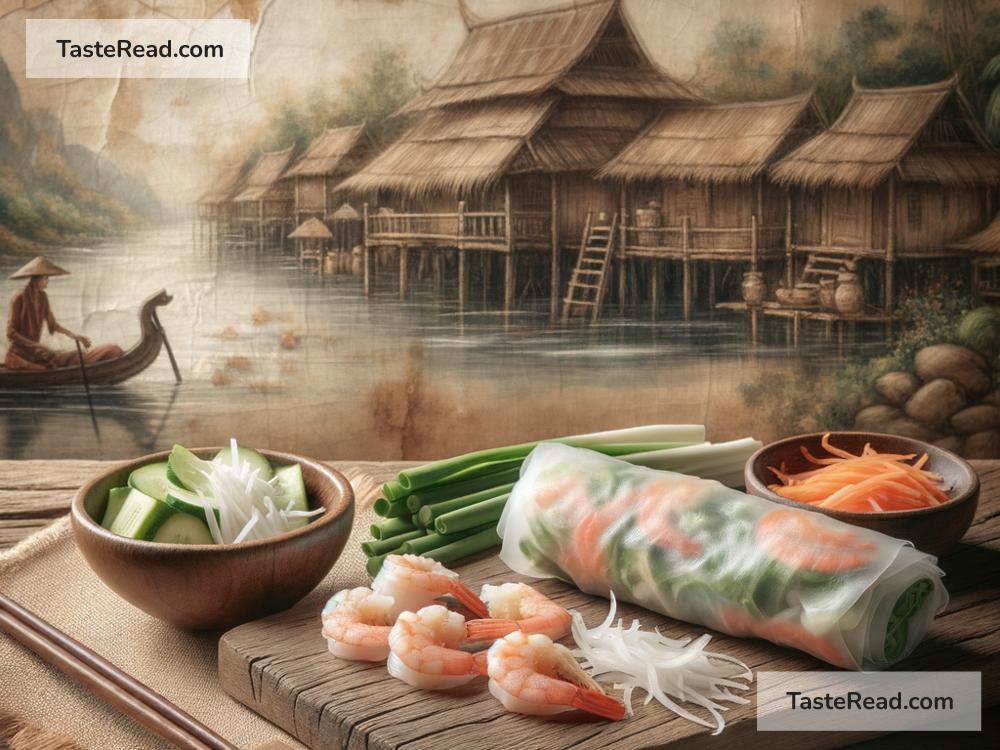The Origins of the First Spring Roll in Folklore
Spring rolls are a delicious and popular snack enjoyed worldwide. These crispy, golden rolls filled with tasty vegetables, meat, or seafood are loved by people of all ages. While today they’re a common dish in many Asian cuisines, their origins are deeply rooted in folklore and ancient tradition. Let’s explore the fascinating stories behind the creation of the very first spring roll.
What Are Spring Rolls?
Before diving into history, let’s first understand what spring rolls are. They are thin, rolled-up pastries filled with a mix of ingredients, such as vegetables, meat, or noodles. These rolls are often fried to achieve a crispy texture, although some versions are served fresh or steamed. Spring rolls can be found in countries like China, Vietnam, Thailand, and the Philippines, with slight variations in each region.
Now, let’s journey back in time to uncover the stories behind one of the world’s favorite snacks.
The Tale of the First Spring Roll
The origin of spring rolls is closely tied to folklore and the ancient traditions of China. According to one famous story, spring rolls may have been created as part of the celebrations for the Chinese New Year, also known as the Spring Festival.
Long ago, farmers in ancient China would celebrate the arrival of spring, which marked the start of a new planting season. After surviving the cold winter months, they were eager to begin farming and harvesting fresh vegetables. During these festivities, people wanted to enjoy light, fresh food to symbolize renewal and hope for a prosperous year ahead.
To honor the season, families began making thin pancakes filled with freshly harvested spring vegetables. These pancakes were rolled up and served to guests as a welcoming dish for the New Year. Over time, this simple dish grew more flavorful as people added meat, spices, and other ingredients.
This humble rolled pancake is believed to have evolved into what we now recognize as spring rolls. The name “spring roll” was inspired by its special connection to springtime and the Spring Festival.
A Story of Good Fortune
Another popular legend tells of a village suffering from a long, harsh winter. Food supplies were running low, and people were desperate for nourishment. One clever villager decided to gather bits of leftover vegetables and scraps of meat to create a simple meal for everyone.
The villager rolled these ingredients into thin wheat wrappers and fried them, creating a warm and filling snack. The rolls were not only tasty but easy to make and share. People called them “spring rolls” because they symbolized the hope for better days as spring approached.
According to the tale, the rolls brought good fortune to the village, as the weather improved and crops began to grow. From that day forward, spring rolls became a symbol of abundance and happiness during times of celebration.
Spring Rolls in Chinese Culture
In traditional Chinese culture, spring rolls are more than just a treat – they are believed to have symbolic meaning. Their cylindrical shape is said to resemble gold bars, which represent wealth and prosperity. That’s why spring rolls are often served during festivals and special occasions, such as weddings and Lunar New Year celebrations.
Some families even have their own rituals and methods for making spring rolls, passed down through generations. Sharing spring rolls with loved ones is seen as a way to spread joy, luck, and unity.
The Journey of Spring Rolls Across Asia
While the origins of spring rolls are linked to China, the dish has since spread across Asia, inspiring regional variations. For example:
-
Vietnam: Vietnamese spring rolls, known as “gỏi cuốn” or fresh rolls, are made with rice paper wrappers and are served fresh instead of fried. They often include shrimp, pork, noodles, and fresh herbs.
-
Thailand: In Thailand, spring rolls are often fried and served with sweet and sour sauce or chili sauce. These rolls are smaller in size but packed with bold flavors.
-
Philippines: Filipinos call their version of spring rolls “lumpia.” Lumpia can be fresh or fried and often feature a mix of minced pork, vegetables, and spices.
Each country has adapted spring rolls to suit its culinary traditions, making the dish a truly versatile and global favorite.
Conclusion
The origins of the first spring roll may be rooted in folklore, but one thing is certain: it represents more than just good food. Spring rolls carry the spirit of renewal, hope, and unity that comes with the arrival of spring. Whether you enjoy them at family gatherings, festivals, or restaurants, spring rolls connect us to centuries of tradition and celebration.
Next time you bite into a crispy spring roll, take a moment to appreciate the rich history and cultural stories behind it. This simple snack carries a legacy that continues to bring joy to people around the world.


